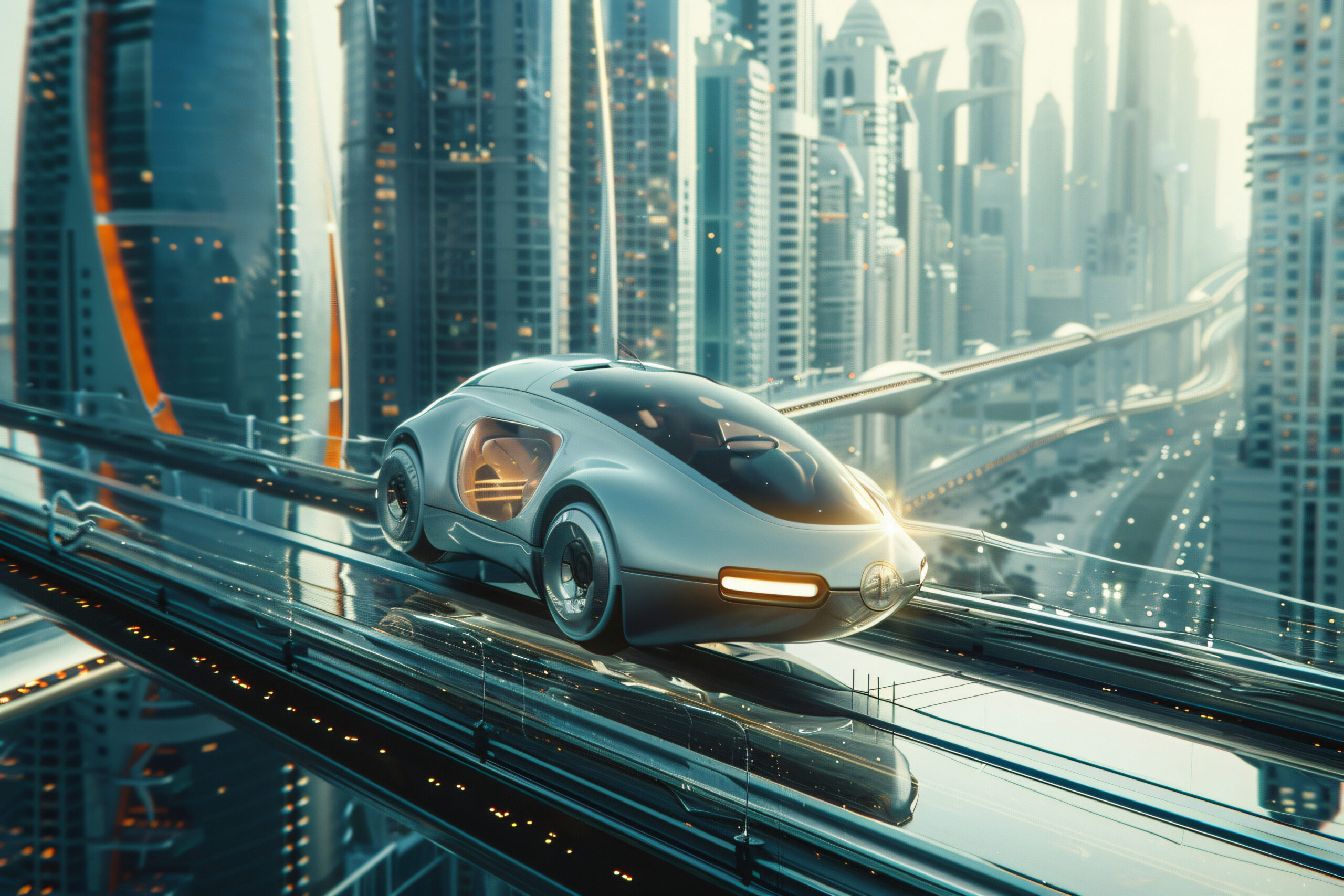Boosting security and efficiency.
ai in transportation has a lot of benefits, including better safety and efficiency among different modes of transportation.
Autonomous vehicles.
ai-powered sensors and algorithms in autonomous vehicles can significantly reduce traffic accidents and fatalities, eliminating the need for human error. Vehicles can sense their surroundings, navigate obstacles, and make timely decisions to ensure safe and efficient travel.
Waymo and tesla are among the companies testing and deploying self-driving cars that have the potential to revolutionize both personal and commercial transportation. Ai can be used to understand traffic conditions, anticipate other drivers movements, and modify their driving habits to improve road safety for all
Management of traffic systems.
ai is enhancing traffic management systems to minimize congestion and optimize traffic flow in urban areas. Ai-powered algorithms can transform real time traffic data from sensors, cameras, and gps devices to adjust traffic signals, reroute vehicles, and optimize intersection management.
Singapore and los angeles are among the cities that have adopted ai-based traffic management systems, which use predictive analytics to predict traffic patterns and prevent congestion. Implementing these systems can lead to shorter journey times, lower emissions, and better urban transportation.
Creating sustainable transportation solutions.
ai in transportation is becoming more environmentally conscious, with the goal of reducing energy consumption and emissions, and encouraging the use of alternative fuels and modes of transportation.
Electric and autonomous fleets.
ai is leading the way in electric and autonomous fleets in transportation. Ai algorithms can improve the efficiency and range of electric vehicles (evs) through better routing and charging. Electric vehicles in autonomous fleets are a viable alternative to conventional gasoline cars, resulting in lower emissions from greenhouse gases and air pollution.
Uber and rivian are among the companies that are experimenting with ai controlled technologies to manage electric and autonomous vehicle fleets for delivery and other ridesharing services. Sustainability, but also cost savings and operational efficiency for both businesses and consumers.
Precautionary preserving.
ai predictive maintenance is helping transportation companies to optimize the performance and reliability of their vehicles and infrastructure. Ai can anticipate problems before they happen, by analyzing data from sensors and iot devices, resulting in reduced downtime and maintenance costs.
AI is used by airlines to monitor the state of aircraft engines and identify maintenance requirements by analyzing data such as engine performance, temperature, and flight history. Proactive maintenance ensures that vehicles and equipment are maintained in the best possible condition, thereby enhancing safety and dependability.
Increasing the accessibility and mobility of urban areas.
ai is making urban mobility more accessible and more accessible to people with disabilities.
Maas and ride sharing.
ai-powered ride sharing platforms and maas solutions are revolutionizing urban transportation, providing users with convenient access to vehicles and services on demand. Ai algorithms connect riders with drivers, optimize routes, and predict demand patterns, resulting in less congestion and more resources.
Using AI, companies like lyft and didi chuxing can improve ride sharing services, making it easier to use and a less need to own a private vehicle. Maas platforms integrate multiple modes of transportation into one app, making it easy for commuters to choose from public transit, bikes, scooters, and all the while being environmentally and budget friendly.
Transportation solutions that are easy to get to.
AI is making transportation easier for people with disabilities. Ai enabled advancements, such as wheelchair accessible vehicles and blind navigation apps, are enabling people with disabilities to navigate cities safely and independently.
Accessnow and be my eyes are two platforms that use artificial intelligence to provide information on accessible locations and assist visually impaired individuals in navigating their surroundings. These technologies make transportation accessible to everyone in the community.
The possibilities and challenges that lie ahead.
ai is a huge driverless car, but there are still many challenges to be overcome to fully use it and make responsible use of it.
The regulatory and ethical dilemmas that must be addressed.
ai in transportation is a big deal, with safety, privacy, and liability being the main concerns. Ai in transportation needs to be regulated and regulated, says the govt. Regulatory regulations for driverless cars, safeguarding passenger information, and addressing concerns about algorithmic discrimination and bias.
Integration and the development of infrastructure.
ai in transportation requires infrastructure, strong communication, advanced sensor technology, smart city initiatives, etc. Infrastructure upgrades are needed for governments and industry stakeholders to support transportation systems that can support ai and integrate with existing infrastructure.
The public’s understanding and acceptance.
the public must embrace ai driven transportation technologies to make them more accessible. Educate them on the safety and advantages of using ai, address job displacement, and promote transparency in ai algorithms, and the public will trust ai and will support it.
The final verdict.
ai is changing the future of transportation, creating safety, efficiency, sustainability, accessibility, and the future of transportation. Ai-led cities and beyond are transforming the way people and goods move, with examples like autonomous vehicles, smart traffic management systems, electric fleets and ride sharing platforms. Despite the obstacles, the collaboration between technology developers, policymakers, and communities is necessary to harness the disruptive power of ai and build a more connected, sustainable, and inclusive transportation system for the future.

Leave a Reply